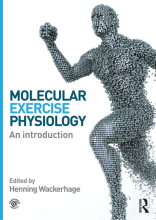Summary: Human Infectious Diseases
- This + 400k other summaries
- A unique study and practice tool
- Never study anything twice again
- Get the grades you hope for
- 100% sure, 100% understanding
Read the summary and the most important questions on Human Infectious Diseases
-
L1 + L2 Course overview and introduction to virology
This is a preview. There are 17 more flashcards available for chapter 16/03/2020
Show more cards here -
Foot-and-Mouth disease virus (FMDV)
FMDV is an extremely infectious picornavirus
zit bij de bek van beest en tussen de hoeven. -
Wat voor een voordelen heeft het voor een virus dat: the viral coat is built up by smaller subunits
- Saving space on the genome
- genetic stability (je
hoeft maar eenkeer ) - possibility to
self-assembly (zelf in elkaar kunnen zetten zonder hulp van buitenaf (op temeratuur etc na)) - structural requirement: assembly symmetric particle from asymmetric proteins
- Saving space on the genome
-
Viruses can be defined as the smallest genetic entities on the planet with the following three main properties:
- Infectivity. This is the ability to enter host cells, to multiply inside these cells, and to spread to other cells.
- Ability to "survive" in an extracellular state
- Obligate, intracellular parasitism. This means a virus cannot multiply without entering a living host cell
- Infectivity. This is the ability to enter host cells, to multiply inside these cells, and to spread to other cells.
-
L3 +L4 Virus infection
This is a preview. There are 21 more flashcards available for chapter 17/03/2020
Show more cards here -
Replication cycle of poliovirus (picornaviridae) het zijn 13 stappen
- Attachement to host receptors mediates endocytosis
- capsid undergoes a conformational change to open a pore in the host endosomal membrane: viral RNA enters the cytoplasm
- VPg is removed from the viral RNA, which is then translated into a processed polyprotein
- Replication via dsRNA occurs in viral factories made of membrane vesicles derived from the ER
- the dsRNA genome is transcribed/replicated to produce mRNA and new ssRNA(+) genomes
- new viral RNA is packaged into reassembled procapsids
- cell lysis and virus release
-
L5+ L6 influenza virus inhuman and animals
This is a preview. There are 27 more flashcards available for chapter 18/03/2020
Show more cards here -
Influenza A virus has a simple life cycle; wat wordt hiermee bedoeld
Site of entry = respiratory epithelial cell
site of replication = respiratory epithelial cell
site of exit = respiratory epithelial cell
in vergelijking met Rabies virus- site of entry: somatic motor neuron of skeletal muscle
- site of replication: CNS neurons
- site of exit: salivary gland epithelial cell
-
Waar bevinden zich de respiratory epithelial cells (6)
beschikbaar in de hele luchtwegenbeschikbaar in de hele luchtwegen
upper respiratory tract- nasal cavity (neusholte)
- pharynx (keelholte)
- larynx (strottenhoofd)
lower respiratory tract- trachea (luchtpijp)
- primary bronchi (primaire bronchiën)
- lungs (longen)
-
Waar is de epithelial layer goed voor?
Is belangrijk voor de vochtbarrière- ondoordringbaar door nauwe kruispunten
- osmotische eiwitgradiënt
- osmotische natriumgradiënt
- ondoordringbaar door nauwe kruispunten
-
Neutrophil activation[alveolar damage]
- Toxic damage door ROS (reactive oxygen species)
- Cytokine production
- NET (neutrophil extracellular trap) formation
-
Macrophage activation[alveolar damage]
- Apoptosis
DR5 (death receptor 5 )- TRAIL (
tumour-necrosis -factor-relatedapoptosis-inducing ligand) - cytokine production
- toxic damage door NO (nitric oxide)
- Apoptosis
-
L7 + L8 food-borne viruses and hepatitis E virus
This is a preview. There are 15 more flashcards available for chapter 19/03/2020
Show more cards here -
Kenmerken/eigenschappen van Rotavirus
- Fam. Reoviridae
- dsRNA, 11 segments
- inner + outer segments
- around 70 nm
- groups A-I
- cel culture possible
- Fam. Reoviridae
- Higher grades + faster learning
- Never study anything twice
- 100% sure, 100% understanding






























